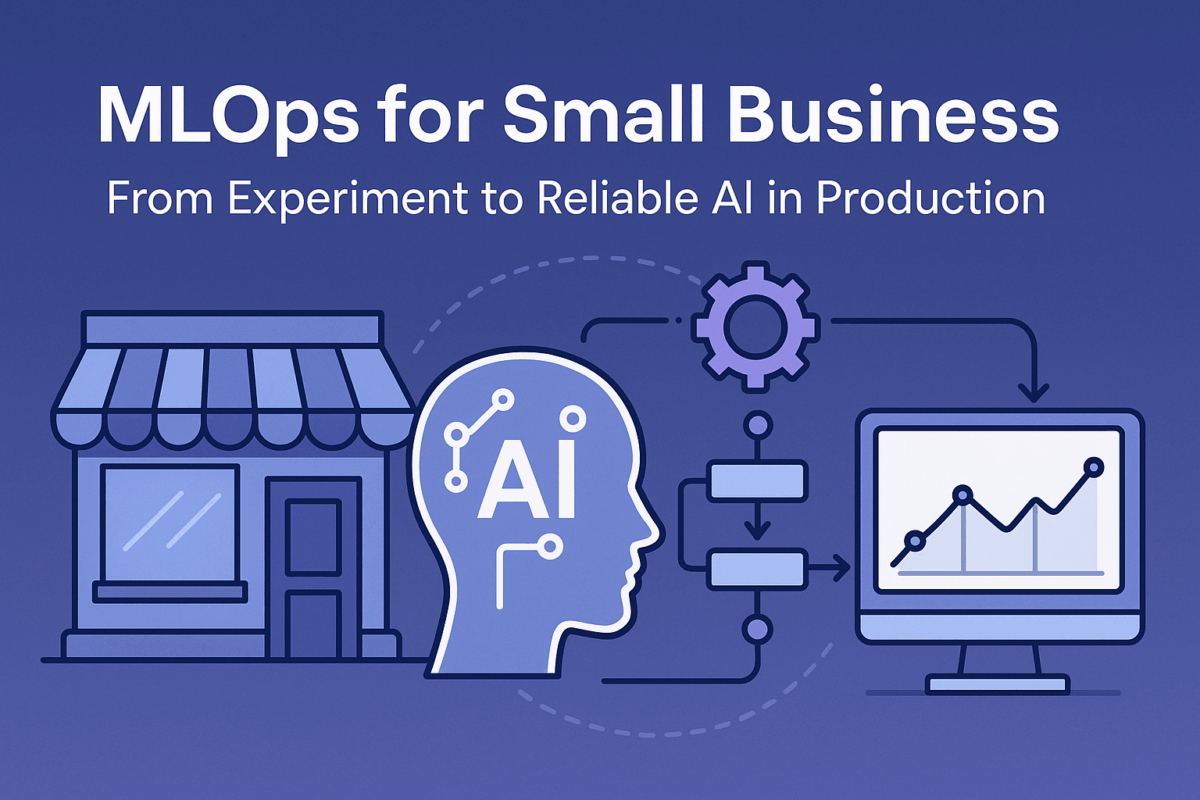Machine Learning isn’t just for the big players anymore. As tools become more accessible and open-source solutions flourish, small and midsize businesses (SMBs) are in a unique position to leverage AI without needing a massive data science team. But deploying a model isn’t the same as maintaining one. That’s where MLOps comes in—and it’s more important than ever.
What Is MLOps?
Think of MLOps as DevOps for machine learning. It’s the combination of tools, practices, and processes that streamline the lifecycle of machine learning models—from development and testing to deployment and monitoring.
For SMBs, MLOps means transforming one-off AI experiments into dependable services that deliver business value continuously. It’s not about scaling to millions of users overnight; it’s about making your AI trustworthy, traceable, and maintainable.
Why Should SMBs Care?
- Reliability: A model that worked yesterday may not work tomorrow. MLOps helps detect and react to performance drift.
- Reproducibility: Can you retrain your model six months from now and get the same result? MLOps ensures you can.
- Speed: Automating your workflows means faster iteration and deployment.
- Compliance: In regulated industries, tracking data lineage and model decisions is no longer optional.
Core Components of SMB-Scale MLOps
1. Version Control for Models and Data
Use tools like DVC (Data Version Control) or Git-LFS to track both code and training data. This keeps experiments reproducible and models traceable.
2. Model Training Pipelines
Orchestrate your training workflows with tools like MLflow or Prefect. These tools let you define training, evaluation, and packaging steps as code.
3. Continuous Integration & Continuous Deployment (CI/CD)
Services like GitHub Actions or GitLab CI can automate testing and deployment. Add linter checks, model accuracy thresholds, and validation steps before pushing live.
4. Monitoring and Alerts
Post-deployment, use tools like Prometheus and Grafana to monitor model accuracy, drift, and latency. Alerts can trigger retraining or rollback workflows.
5. Model Serving Infrastructure
For SMBs, lightweight options like FastAPI, BentoML, or KServe can expose models as APIs. Pair these with container orchestration (e.g., Docker, Kubernetes) to manage deployments.
SMB Deployment Example: Mergent + AI Substrate
Imagine you’re running a chain of specialty retail stores. You use AI to forecast inventory needs based on local weather, foot traffic, and seasonal trends.
- Model Training: You train your model on a hosted notebook environment connected to your Mergent virtual desktop.
- CI/CD: GitHub Actions pushes updates to your private container registry when new models are validated.
- Serving: The model is served via a FastAPI endpoint within your AI Substrate environment.
- Monitoring: Grafana dashboards let you know if accuracy dips below a defined threshold.
In other words, you built a full AI pipeline—with just the right amount of complexity.
Pitfalls to Avoid
- Skipping data validation: Garbage in, garbage model.
- Overcomplicating the stack: Pick only the tools you truly need.
- Neglecting monitoring: Models degrade. You won’t know unless you’re watching.
Final Thoughts
MLOps doesn’t have to mean enterprise overhead or an army of engineers. With today’s lightweight tools and a clear strategy, small businesses can achieve the kind of operational stability that lets AI go from “neat experiment” to “core capability.”
Start small. Automate what matters. And above all, keep learning.
Ready to deploy AI that works as hard as you do?



